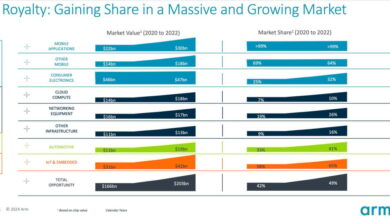The Very Best Resources for Docs

Like it or not, artificial intelligence (AI) is coming to medicine. For many physicians — maybe you — it’s already here.
More than a third of physicians use AI in their practice. And the vast majority of healthcare companies — 94%, according to Morgan Stanley — use some kind of AI or machine learning.
“It’s incumbent on physicians, as well as physicians in training, to become familiar with at least the basics [of AI],” said internist Matthew DeCamp, MD, PhD, an associate professor in the Center for Bioethics and Humanities at the University of Colorado Anschutz Medical Campus, Aurora, Colorado.
Understanding AI can help you leverage it safely and effectively — plus “make better-informed decisions about whether or not to use it in [your] practice,” DeCamp said.
“Frankly, the people who are deciding whether to implement algorithms in our day-to-day lives are oftentimes not physicians,” noted Ravi B. Parikh, MD, an assistant professor at the University of Pennsylvania and director of augmented and artificial intelligence at the Penn Center for Cancer Care Innovation, Philadelphia. Yet, physicians are most qualified to assess an AI tool’s usefulness in clinical practice.
That brings us to the best starting place for your AI education: Your own institution. Find out what AI tools your organization is implementing — and how you can influence them.
“Getting involved with our hospital data governance is the best way not only to learn practically what these AI tools do but also to influence the development process in positive ways,” Parikh said.
From there, consider the following resources to enhance your AI knowledge.
Get a Lay of the Land: Free Primers
Many clinical societies and interest groups have put out AI primers, an easy way to get a broad overview of the technology. The following were recommended or developed by the experts we spoke to, and all are free:
- The American Medical Association’s (AMA’s) framework for advancing healthcare AI lays out actionable guidance. Ask three key questions, the AMA recommends: Does it work? Does it work for my patients? Does it improve health outcomes?
- The Coalition for Health AI’s Blueprint for Trustworthy AI Implementation Guidance and Assurance for Healthcare provides a high-level summary of how to evaluate AI in healthcare, plus steps for implementing it. AI systems should be useful, safe, accountable, explainable, fair, and secure, the report asserted.
- The National Academy of Medicine’s draft code of conduct for AI in healthcare proposes core principles and commitments. These “reflect simple guideposts to guide and gauge behavior in a complex system and provide a starting point for real-time decision-making,” the report said.
- Health AI Partnership — a collaboration of Duke Health and Microsoft — outlines eight key decision points to consider at any stage of AI implementation, whether you’re still planning how to use it or you’ve started but want to improve it. The site also provides a breakdown of standards by regulatory agencies, organizations, and oversight bodies — so you can make sure your practices align with their guidance.
Make the Most of Conferences
Next time you’re at a conference, check the agenda for sessions on AI. “For someone who’s interested in this, I would be looking for content in my next national meeting because, undoubtedly, it’s going to be there,” said DeCamp. In a fast-moving field like AI, it’s a great way to get fresh, up-to-the-moment insights.
Listen to This Podcast
The New England Journal of Medicine‘s free monthly podcast AI Grand Rounds is made for researchers and clinicians. Available on Apple, Spotify, and YouTube, the pod is good for “someone who’s looking to see both where the field is going [and to hear] a retrospective on big-name papers,” said Parikh . Episodes run for about an hour.
To learn about the challenges of applying AI to biology: Listen to Daphne Koller, PhD, founder of AI-driven drug discovery and development company insitro. For insights on the potential of AI in medicine, tune into the one with Eric Horvitz, MD, PhD, Microsoft’s chief scientific officer.
Consider a Class
Look for courses that focus on AI applications in clinical practice rather than a deep dive into theory. (You need to understand how these tools will influence your work, not the intricacies of large language model development.) Be wary of corporate-funded training that centers on one product , which could present conflicts of interest, said DeCamp. See the chart for courses that meet these criteria.
| Course | Best for | Price | Time | CME |
| American Board of Artificial Intelligence in Medicine Introductory Course |
Doctors in any specialty. It offers a broad overview of AI basics, applications, and use in subspecialties |
$600 for physicians, $300 for residents and staff, and $120 for students | Two 9-h days | 12.5 AMA Physician’s Recognition Award Category 1 credits |
| American Medical Association Artificial and Augmented Intelligence in Health Care | Go-at-your-own-pace learners: Start with the basics and level up if you want more.
Surgeons: Check out the 4-credit section on AI and augmented intelligence in surgery |
Included with AMA membership; annual rates range from $20 for medical students to $420 for practicing physicians | No time limit | 17 credits |
| American Academy of Family Physicians AI in Family Medicine: Transforming Your Practice |
Primary care and family physicians looking to use AI to support their practice or expand their capacity | Free | No time limit, but the course is only available until May 22, 2026 | 1.5 AAFP prescribed credits |
| Stanford’s AI in Healthcare Specialization on Coursera | The aspiring techie. This goes beyond the fundamentals and includes a capstone activity that lets you follow a patient’s journey through data | Free for 7 days, $79.99/mo after that | 1 month at 10 h/wk, flexible schedule | None |
| AI = artificial intelligence; AAFP = American Academy of Family Physicians; AMA = American Medical Association; CME = continuing medical education | ||||


